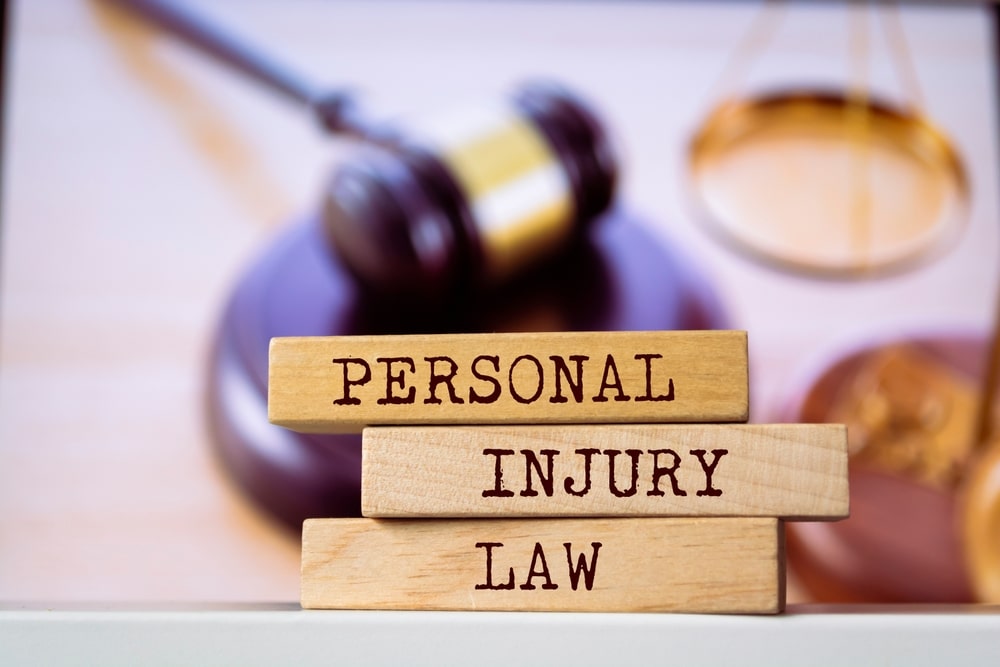January 24, 2024
What are my Rights if a Valet Wrecks my Vehicle in Tennessee? Understanding Liability and Recourse
When entrusting a vehicle to a valet service, the expectation is that the vehicle will be returned in the same condition as when it was left. However, accidents can occur, and vehicles may sometimes suffer damage while in the care of a valet. In such instances, a car owner has certain rights that can be exercised to seek compensation or repair. It is essential to understand these rights to navigate the situation effectively and ensure that any damages are appropriately addressed.
Upon discovering that a vehicle has been damaged by a valet, the first course of action is to report the incident to the valet service provider immediately. Documentation is crucial; thus, taking detailed photographs of the damage and obtaining statements from witnesses can support the owner’s claim. The liability of the valet service for the damages often hinges on the establishment of negligence and the terms outlined in the valet company’s service agreement.
Many valet companies carry insurance policies that cover damages caused by their employees while the vehicles are under their custody. However, the extent of coverage and the process for filing a claim can vary. It is important for vehicle owners to review the valet service’s policy regarding accidents or damages, which is often provided upon request, for specific instructions on how to proceed with a claim. Vehicle owners may also need to contact their own insurance company, particularly if the valet service’s coverage is insufficient or if they dispute the claim.
Understanding Your Rights in Tennessee
When a valet service causes damage to your vehicle, it’s essential to understand the scope of their liability and the terms of the service agreement. These factors dictate your rights and potential avenues for compensation.
Legal Basis for Liability
The legal relationship between you and the valet service is typically founded on bailment—a situation where the valet company takes temporary custody of your vehicle. They are obligated to return it in the same condition as received. If they fail to do so due to negligence or misconduct, they may be held liable for the resulting damages. In such instances, the valet service must either pay for repairs or compensate for the loss. It’s imperative that the damage is directly linked to the valet’s actions, and it should be reported immediately.
Standard Valet Service Terms
Most valet services outline their terms in a posted sign or ticket stub, which usually define the liability limitations and claim procedures. These terms commonly assert that the valet service will only be responsible for damage if it’s proven that the valet was negligent. The service may also set a time frame within which any claims must be filed.
Contractual Obligations and Fine Print
When utilizing valet services, you are typically entering into a contract, the specifics of which are often contained in the fine print on the valet ticket or posted signage. It’s crucial to read and understand these details as they may include clauses related to limited liability, damage claim procedures, or exclusions. For example, a valet ticket may state that they are not responsible for items left inside the vehicle, or for damage that occurs due to “acts of God” — unforeseen natural events beyond human control such as storms or earthquakes.
Steps to Take Immediately After the Incident
In the unfortunate event of a valet-damaged vehicle, immediate action can mitigate further complications. The following steps outline clear procedures to establish accountability and streamline the resolution process.
Document the Damage
The vehicle owner should photograph the vehicle from multiple angles to capture all areas of damage. Detailed images serve as evidence and should focus on new damages not present before valet servicing. Additionally, they should jot down the date, time, and specific details of the incident in question.
Notify the Valet Service
The owner must promptly inform the valet service of the damage. This communication should be direct and in writing to create an official record. The individual should obtain the name and contact information of the person in charge and any employees who handled the vehicle.
File a Report with the Police
If significant damage occurred, it’s advisable to contact the local police and file a report. This action formalizes the incident and may be required for insurance purposes. The owner should request a copy of the police report for their records.
Contact Your Insurance Company
The owner should call their insurance provider to report the damage as soon as possible. Insurance representatives will provide specific guidance on the claims process. It’s crucial to forward all compiled documentation, including photographs, written communications, and the police report, to the insurer.
Navigating Insurance Claims
When a valet wrecks a vehicle, understanding the insurance claims process is critical. The vehicle owner may need to interact with multiple insurance companies to seek compensation.
Understanding Insurance Coverage
To begin, one should review their own auto insurance policy to determine the type of coverage they have. This typically falls into two categories: collision and comprehensive. Collision coverage may cover damages when another party is at fault. Comprehensive coverage may handle non-collision related incidents. The policy’s deductible and policy limits should be noted, as these will affect the claim.
Dealing with the Valet’s Insurance
In cases where the valet service is at fault, the claim is generally filed against the valet’s insurance, as businesses are usually required to carry garage keepers legal liability or general liability insurance. One should obtain the insurance information of the valet service and file a third-party insurance claim. Documentation required will typically include:
- Evidence of the incident (photos, videos)
- A copy of the police report (if applicable)
- Statements from any witnesses
Filing a Claim with Your Own Insurance
If resolving the matter with the valet’s insurance is unsuccessful, one might opt to file a claim with their own insurer. The insured would contact their insurance company, provide evidence of the incident, and submit a first-party insurance claim. It is important to be aware that this may involve paying a deductible. Subsequently, the insurer may pursue subrogation to recover costs from the valet service’s insurer.
Legal Action and Compensation in Tennessee
If a valet service damages a vehicle, the owner has the right to seek legal recourse and financial compensation. The following subsections outline the steps to consider a lawsuit, how to find legal representation, and the types of damages and compensation that may be available.
When to Consider a Lawsuit
The decision to pursue legal action typically arises if the valet service’s insurance denies the claim or offers inadequate compensation. The vehicle owner should document all damages and gather evidence, such as photographs, valet tickets, and witness statements. One should also obtain repair estimates to substantiate the amount of compensation being claimed.
Finding Legal Representation
When seeking legal representation, it is important to choose Nashville car accident attorney with experience in property damage or personal injury law, depending on the extent of the incident. Referrals from trusted sources and professional legal organizations can assist in finding a qualified personal injury lawyer in Nashville. An initial consultation can provide insights into the legal process and the strength of the case.
Possible Damages and Compensation
Compensation in such cases may involve several types of damages:
- Repair Costs: Actual expenses to restore the vehicle to its pre-accident condition.
- Diminished Value: The reduction in the vehicle’s market value due to the accident.
- Loss of Use: Costs associated with the inability to use the vehicle during repairs, which might include car rental fees.
A clear understanding of these potential compensatory areas can help vehicle owners in pursuing fair recovery for their losses.
Preventative Measures for the Future
To mitigate risks and enhance safety when using valet services, car owners can take several preventative measures. These strategies ensure peace of mind and safeguard against potential vehicle damage.
Choosing a Reputable Valet Service
When selecting a valet service, thorough research is crucial. Companies with solid reputations typically have:
- Well-trained drivers
- Clear policies for handling incidents
- Positive reviews and high ratings from past customers
Car owners should verify the service’s track record and ask for recommendations from trustworthy sources.
Understanding Insurance Policies Beforehand
Before entrusting a car to a valet service, car owners must understand their own auto insurance coverage as well as the valet company’s insurance. It is essential to confirm:
- The extent of the valet service’s liability insurance
- Whether the car owner’s policy includes a valet parking endorsement
This knowledge allows car owners to identify coverage gaps and potentially add necessary protection.
Taking Precautionary Steps Before Using Valet
Prior to handing over the keys, car owners can take proactive steps to protect their vehicle:
- Document the car’s condition with date-stamped photos or videos.
- Remove valuable items and personal belongings from the vehicle.
- Use valet mode, if available, which limits access to storage compartments and personal data.
Through these actions, car owners establish a baseline for the vehicle’s condition and reduce the likelihood of complications in the event of an incident.
Frequently Asked Questions
Who is responsible if a valet service damages my vehicle?
Typically, the valet service is liable for any damages incurred while your vehicle is in their care. The valet company usually has insurance to cover such incidents.
What should I do immediately after noticing the damage?
Document the damage with photos, notify the valet service immediately, and request the contact information for their insurance provider.
Can I request surveillance footage from the valet service?
Yes, you can request video surveillance footage. It helps to establish the timeline and potentially who is at fault.
Is it necessary to file a police report if my vehicle is damaged by a valet?
It depends on the extent of the damage. For minor incidents, it may not be required, but for significant damage, a police report can be helpful when filing a claim.
What if the valet service refuses to acknowledge the damage?
If they refuse responsibility, contact their insurance company directly. If that fails, consider seeking legal advice.
Can the valet service limit their liability through a disclaimer?
Disclaimers may attempt to limit liability, but they can’t fully absolve the valet service from responsibility for negligence or wrongful acts.
Should I report the incident to my own insurance company?
Yes, it’s advisable to inform your insurance provider, even if you’re seeking compensation from the valet service’s insurer.
Conclusion
When a vehicle is damaged by a valet service, the car owner has specific rights which should be asserted. Firstly, the valet company typically bears liability due to the bailment agreement formed when a car is accepted by the valet. Documentation is crucial; the owner should immediately:
- Photograph all damages.
- Report the incident to the valet service.
- Request the valet service’s insurance information.
The owner may file a claim with the valet service’s insurer; however, if the service is uncooperative or the claim is denied, legal counsel can be sought. It is necessary to be aware of:
- Applicable statutes of limitations for property damage.
- The terms and conditions stipulated by the valet service, which may affect the claim.
Small claims court can be an option for resolution if the damages fall within its jurisdictional dollar amount. In any case, the key is to act promptly and methodically to ensure the best chance of a favorable outcome.




